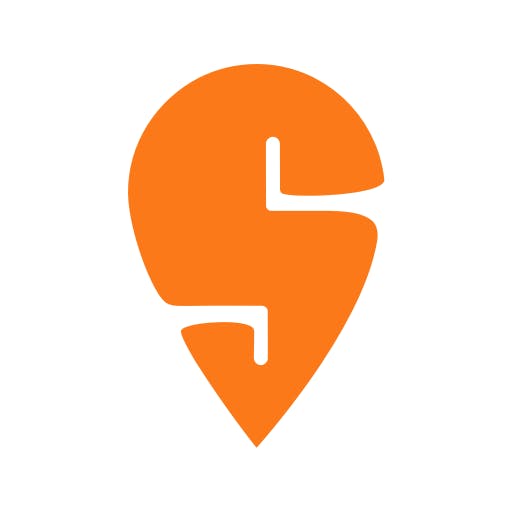Former corp dev at a European on-demand unicorn on dark store unit economics
 Nan Wang
Nan Wang
Questions
- What trends do you see in AOV?
- How do you see grocery differ from food? Do you expect people to bundle more of their weekly shopping into on-demand?
- How many drops per hour are possible for the point-to-point model like Deliveroo and Glovo vs the drops per trip from the hub and spoke model used by these dark stores?
- How has delivery cost trended over time for the European players?
- How has couriers’ pay been trended?
- Can you please speak about order frequency? How important do you think order frequency is in value creation?
- For the dark store players, how well are they generating demand?
- How well do you think Getir and Gorillas are doing in terms of owning the customer relationship?
Interview
What trends do you see in AOV?
I think for grocery delivery related to quick commerce, AOV tends to trend down because people are looking increasingly for convenience and that means ordering whatever they need at the moment that they want it.
I think it’s also related to Prime membership subscriptions, as prime membership increases penetration, you pay £10 – 15 per month, people tend to order more frequently, which doesn’t increase AOV at all. It's having the opposite effect.
I think most of the online food delivery players that are doing groceries, all these players are that emerging in the UK they have a minimum spending requirement because people otherwise would be just a bunch of bananas or small ticket size items.
In that sense, it's really complicated to make unit economics work.
There's some room to upsell. Also, for these players to increase their addressable market, they need to reach more people. Right now, one of the barriers to reaching some people it's because food delivery is expensive. So if they want to reach those people, companies can create cheap brands, so that we can reach those people.
How do you see grocery differ from food? Do you expect people to bundle more of their weekly shopping into on-demand?
There's some room to upsell. There is also supermarket delivery. There are players that focus on convenience and providing things as fast as possible. And these are relatively low basket sizes.
And then there's the shopping basket that you go to maybe once a week or once a month where you have a large AOV.
A lot of the convenience delivery players are trying to tap into the big basket size, but if you expand too much your product offering, then it's much harder…because the cost base is not that flexible, the moment that you introduce fresh products in your offering, it's also much more challenging.
I guess they need to find the right trade-off. They can definitely increase average order value, but I think if they build up, that's also going to be followed by an increase in the cost base because costs are not that flexible; They might have more wastage of fresh products at themselves.
How many drops per hour are possible for the point-to-point model like Deliveroo and Glovo vs the drops per trip from the hub and spoke model used by these dark stores?
I think if you do bundling, 3.5 drops per hour would be one of the highest. I don't think anyone can reach more than 3.5 in the point-to-point model, maybe three is already very good in large cities like London.
Glovo has very good efficiency because they have a really good algorithm and they can optimize it really well.
I'm not so sure about the other delivery model and I think it depends a lot on the city, but I think stacking/bundling is important, i.e. for drivers to deliver more than one order at the same time, it doesn't need to be from the same restaurant.
How has delivery cost trended over time for the European players?
It's definitely going down because they're increasing efficiency, so a higher number of drops per hour.
If you looked at the cost of delivery as £ per hour, it’s in line with the minimum salary.
Another variable is whether couriers become employees or not, which has a lot of impact on the delivery cost. Depends on how many of them the companies want to employ. Because that would become a fixed cost base. Right now, it's a variable cost.
Right now, they sign up, I think it's a week before and you'll pay them only if they deliver an order. When they become your employees, you pay them every month, you pay social security, you pay all of the costs that are involved and you don’t have any flexibility at all.
Food delivery, in general, has fluctuation in demand. So you really need to have that flexibility to adjust your cost and be prepared for the demand.
How has couriers’ pay been trended?
So all these delivery platforms usually start by paying couriers on a per-trip basis.
And that's why it has been trending down. Because at the end of the day, couriers care about how much money they make on a per-hour basis. So that's the benchmark that they use to look at how much they're making.
So if platforms can increase the efficiencies, the drops per hour, then they can afford to pay them and less on a per order basis because, in the end, they're making the same. So that's why it has been trending down.
Couriers are being paid per trip. If a courier is paid £3/trip and delivers efficiency is 2 drops per hour, he/she is going to be paid £6 per hour. That's a number couriers really look at.
They compare how much could I be making if I work at another job. Let’s say one year after that, delivery efficiency increases to three drops per hour, instead of two. So now the couriers make nine per hour. These gains do not translate into couriers’ costs. Deliveroo says: okay, now, instead of paying you £3 per trip, I'm going to pay you less so in the end, the courier is making the same amount of money.
Because there are more drops and they can be much more efficient. Usually, the gain in the efficiency, maybe 10 – 20% can translate to couriers’ earnings so that they're happier and they make more money on a per hour basis, but the biggest gains are to Deliveroo because they decide to decrease the number of pounds per trip.
Can you please speak about order frequency? How important do you think order frequency is in value creation?
They can grow the pie by increasing AOV, increasing frequencies, or new customers. And I think it's related to the prime subscription. Um, because one of the benefits that increasing AOV has is that if someone is not the prime user, you would make a lot more delivery fees because they're ordering much more often.
But once they become prime members, the platforms make the prime pricing somehow that they can make money out of the fee. I think then the upside on delivery fees from frequency, it's limited but it’s reflected on the prime membership.
If you look up the revenues from the online food delivery player, it's basically like 90% comes from commission, which you charge the restaurant and the delivery fee that comes from your users. The most important one by far is a commission that you get from restaurants.
So from an order frequency perspective, if a user orders 4x instead of 2x, then you're making much more fees from restaurants.
It doesn't matter if they're a prime member or not. Um, like maybe from a delivery perspective, you're making the same, but you're making much more from the commissions that you've charged through restaurants.
I think that frequency is one of the key levers to grow.
For the dark store players, how well are they generating demand?
I think dark kitchen can either decide to partner with online food players or build your own sales channel, your own POS, and then maybe have your own delivery guys or have a third-party player that's only doing delivery. In that case, you need to invest a lot in marketing and build your own strategy. I think it's much more difficult because people are so used to going to Deliveroo or Uber Eats if they want to order food.
The dark store model, I think it's really difficult to scale, but if you decide to partner with Deliveroo or Uber Eats and you have a dark store, then these platforms already have some marketing in place where you invest in priority listing, which can be really expensive, to be honest.
Platforms like Deliveroo or Uber Eats have so much power to drive traffic that I think any dark store should consider partnering with them.
There is also a bit of conflict of interest between online platforms and dark stores, because if you're a dark store and you have been partnering with Deliveroo and everything has been working well, then you're happy.
But Deliveroo is also expanding their Deliveroo Editions and their dark stores, and they are positioning their brands on top of yours. So that's also driving a bit of a conflict of interest because they're competing with their partners, which have been essential partners of the Deliveroo platform, without restaurants, there's no Deliveroo.
I think it's really hard to make online grocery profitable. I think it's much harder than food delivery, because not only you have the delivery costs, but you also have the picking cost, like the person that's picking out the orders, unless you're fully automated. You have a huge cost of paying salaries for people that are just picking up the items, packing them, then placing them at the front where the couriers come and deliver them. And of course the cost of the food. So it's really hard to monetize it.
I think grocery delivery now is what food delivery was maybe three years ago before it started to rationalize a little bit. Right now online grocery is still relatively new. There's literally a war of discounts between players because they want to win the markets.
I don't know how that's going to play out, to be honest. Because you're competing with Deliveroo, which has a huge user base, that's also doing delivery.
It reminds me of ride-hailing. All these new players that came out and at the end, either they didn’t survive or they were acquired, or they left the market.
I don’t think grocery delivery is going to be a market where 20 players exist.
If Deliveroo wants to use the same delivery guys that they're using for food, it's not that easy to try to expand AOVs because you have to limit maybe the number of items that people order because the couriers are using their motorbikes to deliver. They cannot deliver £200 AOV worth of items.
Some of these players are also trying to use cars to tackle big basket sizes for on-demand, but that adds a lot more complexity to the dispatching algorithm.
Disclaimers
This transcript is for information purposes only and does not constitute advice of any type or trade recommendation and should not form the basis of any investment decision. Sacra accepts no liability for the transcript or for any errors, omissions or inaccuracies in respect of it. The views of the experts expressed in the transcript are those of the experts and they are not endorsed by, nor do they represent the opinion of Sacra. Sacra reserves all copyright, intellectual property rights in the transcript. Any modification, copying, displaying, distributing, transmitting, publishing, licensing, creating derivative works from, or selling any transcript is strictly prohibited.









